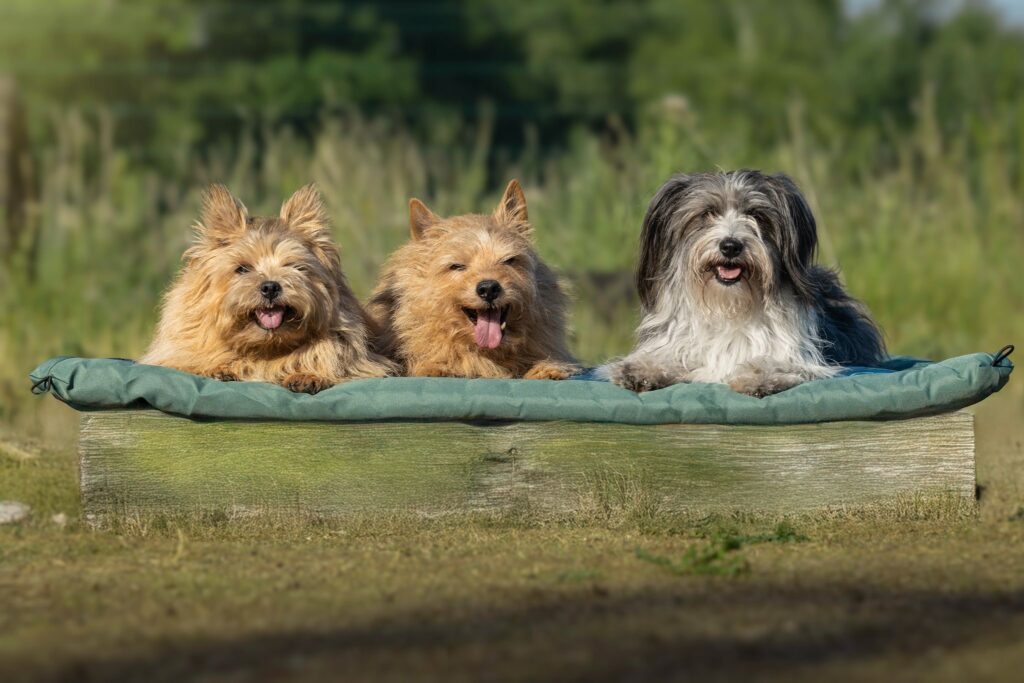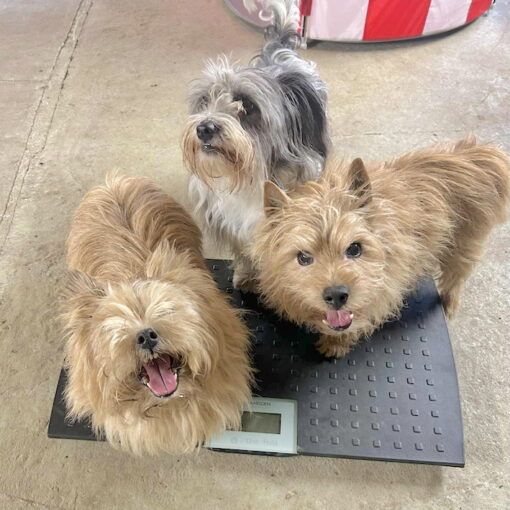Of all the skills and tricks I teach my own dogs, the Settle is one of my top priority skills I start quite early on as it’s something that we use at home and when away from home.
Settle training can be fun to work on and there are many ways to progress it so we can make the most of all kinds of situations and events!
You don’t need specialist equipment for Settle training but it can be a great excuse to look at some gorgeous Dog Settle Mats and Beds: take a look at some of our favourites such as:
Taylor and Floof : Visit site
Twiggy Tags: Visit site
Lords and Labradors: Visit site

We use the Settle in lots of ways including;
- During work zooms
- In the garden when we use machinary
- When at my work while I take training
- Out at Dog Shows including Crufts, Edition Dog
- During longer dog walks with breaks
- Visiting other people’s homes
- Visiting Dog Friendly Pubs, Cafes etc
I’ve also used it when one of my dogs has been unsure about something happening nearby such as another dog barking, a sudden loud noise or even while the effects of anaesthetic are wearing off and they have been a little confused. Using something they are familiar with can be comforting and helpful.
When introducing my dogs to new types of transport such as trains or buses and even boats I have also utilised the settle cue using one of their mats so there is something familiar on the floor for them. Helping them settle and just stay laying down in a safe space means they can get their balance, stay calm to notice nothing bad is happening and then they can just chill out. I also used this when training a young assistance Labrador and the settle really helps in so many places!

So how do we help our dogs learn how to Settle on Cue?
Choose a blanket, dog bed, mat etc you would like to use to teach the settle initially. It ideally should be something your dog can lay or sit on comfortably, is happy to walk on it and isn’t bothered by the material, and is something you would be able to take with you to practice the Settle – so maybe not a designer dog bed with fancy feet, four poster style and weighs a huge amount!!!
Place your chosen Settle Item somewhere you can practise with your dog, so in a room your dog is allowed into, with space to train, flooring your dog can move on without sliding about, and minimal distractions!
One method for starting settle is to teach dogs to be on their bed / blanket etc by luring them with a treat or toy and praise calmly while they are on there. This builds a positive association with the bed or blanket so your dog wants to spend time there.
While your dog is on the bed or blanket and enjoying their treat, chew, toy etc give slow, calm strokes down their back from nape of neck to base of tail and down the sides of their body – while saying something like Settle. The wording is up to you but try and make it a word you will easily remember and associate with Settling. I use Settle but other suggestions might be Relax, Be Calm or Switch Off.
The slow strokes are known as Calming Strokes and help dogs feel calmer through repetition, pressure points and lowering Adrenalin naturally which all helps a dog to feel calmer. Pairing the action of the calming strokes with your Settle cue word will help your dog to be able to feel calmer when they hear you ask them to Settle etc.
After a few strokes you can opt to let your dog move away if they want or stay with this if your dog is enjoying it and continue the strokes and occasionally give the chosen Settle cue.
Tips continue under the photo:

- Repeat guiding your dog onto the bed or blanket, giving a treat or toy, and using the calming strokes along with your Settle cue. You can do this a few times in a session or just once then again later in the day.
- Extend the length of time you do the calming strokes for while your dog learns to stay settled
- If your dog doesn’t know how to lay down on cue this can be useful to teach them. Many dogs can also move into a down once the calming strokes begin and they get comfy.
- Move away a little and send your dog to the bed or blanket then ask for settle. Move closer to give reward and praise.
- Build up the distance sending your dog to the bed over a few short sessions. This helps with being able to send your dog to the Bed on cue but also helps with generalising which means dogs are able to perform a skill in different places and with different distractions.
- Gradually rescue the length of time you give the calming strokes but also increase the time you ask your dog to settle. You can also give the calming strokes when you move closer to praise.
- Practise in different parts of the house, in the garden, on the driveway, at the park, at the beach etc. Start close up and help your dog get it right, repeating the steps above.
This is an outline of how to teach a Settle but there are many variables we may change for individual dogs to help them learn, and putting this into practise can also change to help dogs.
A Settle is a really useful skill for Dogs of all ages plus is a the perfect exercise to work on when it’s torrential rain forecast for a day or two!
For more advice on using the Settle as part of Travelling with your Dog as well as tips on making various methods of travel fun for your dog take a look at the Ebook ‘Travelling With Pets’.
Visit Travelling with Pets Guide
We hope you found this blog useful – we would love feedback you may have or suggestions for future blog topics too!
Joe Nutkins
Kennel Club Accredited Dog Trainer
Certified Dog Tricks Instructor
Certified Professional Canine Fitness Trainer



